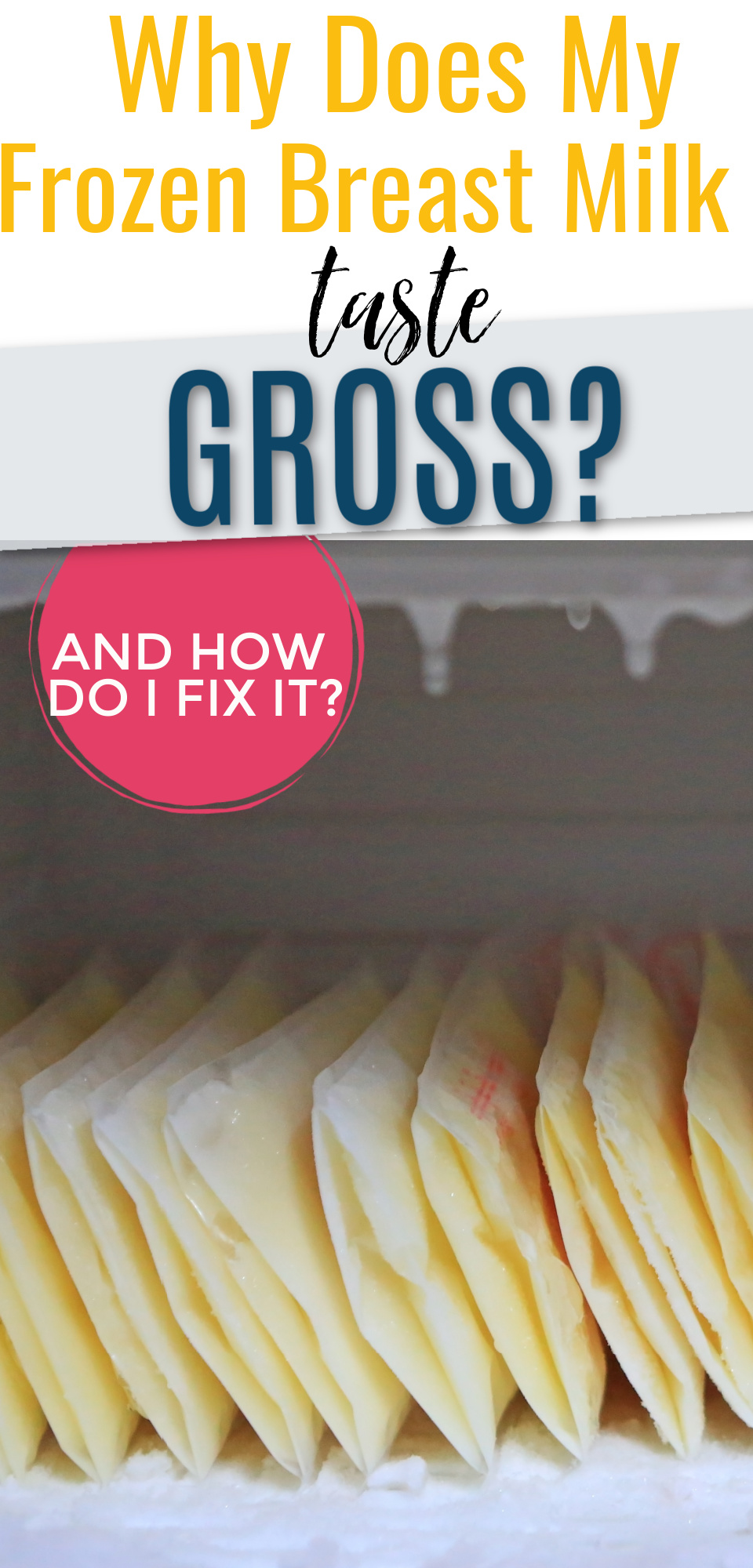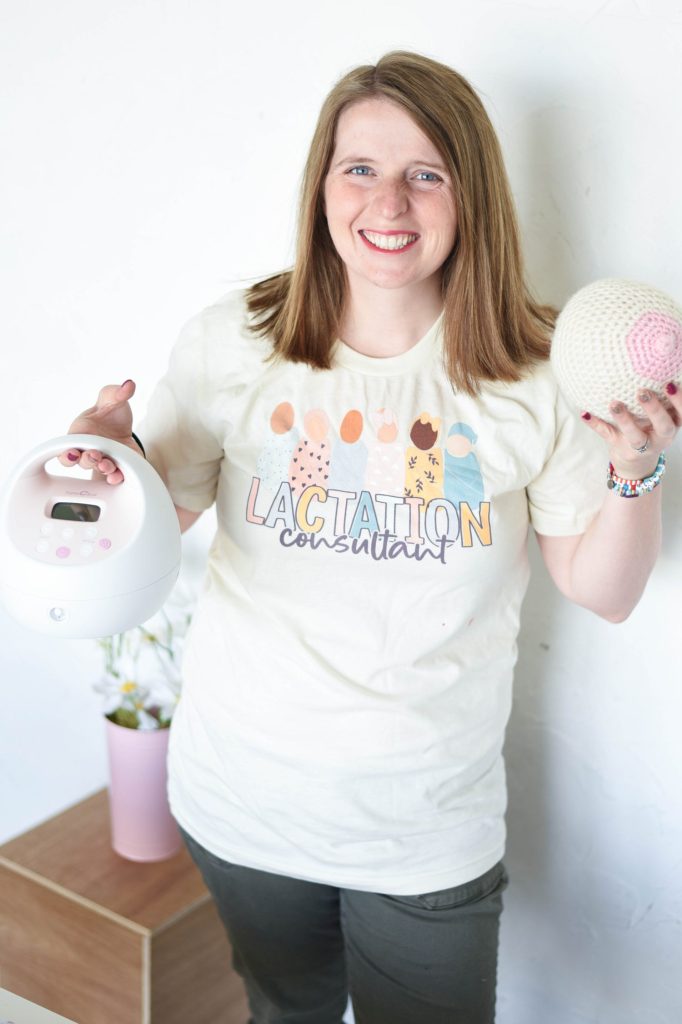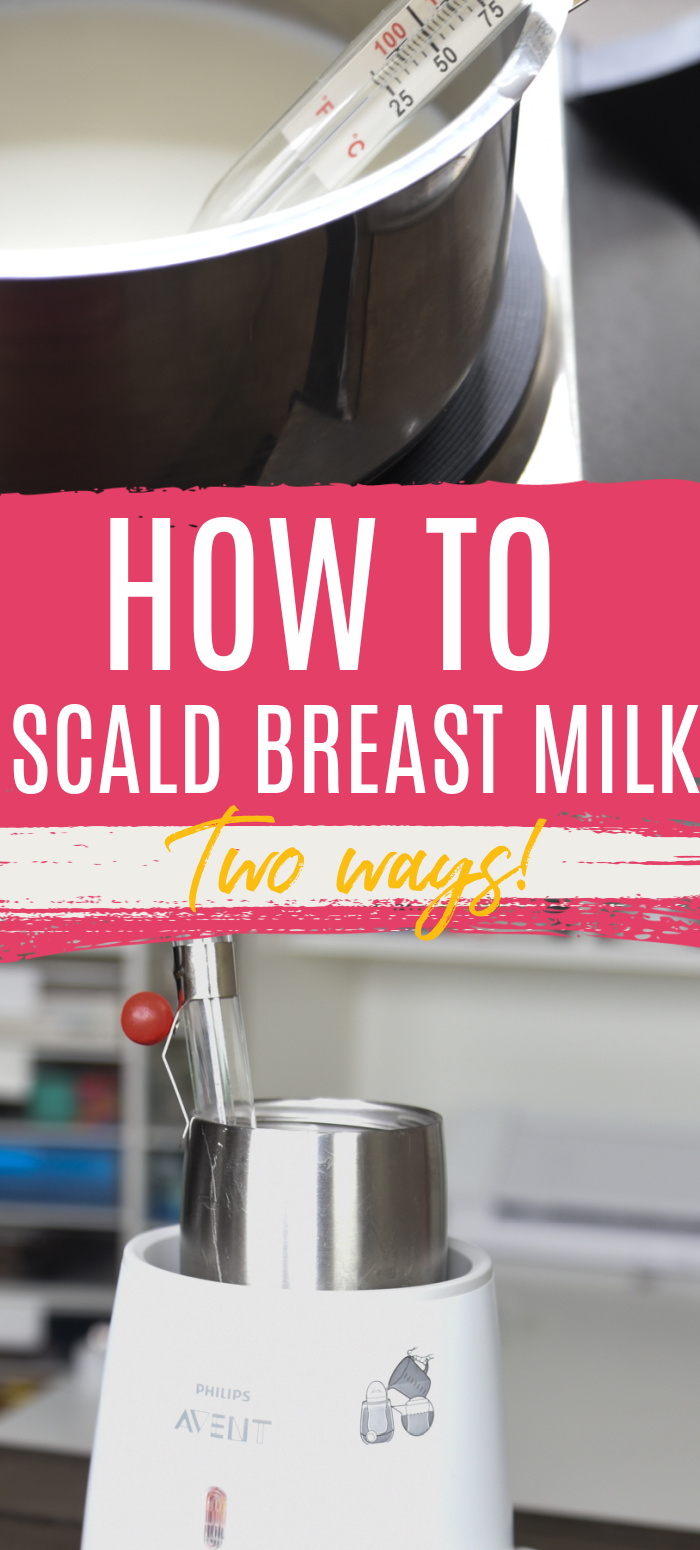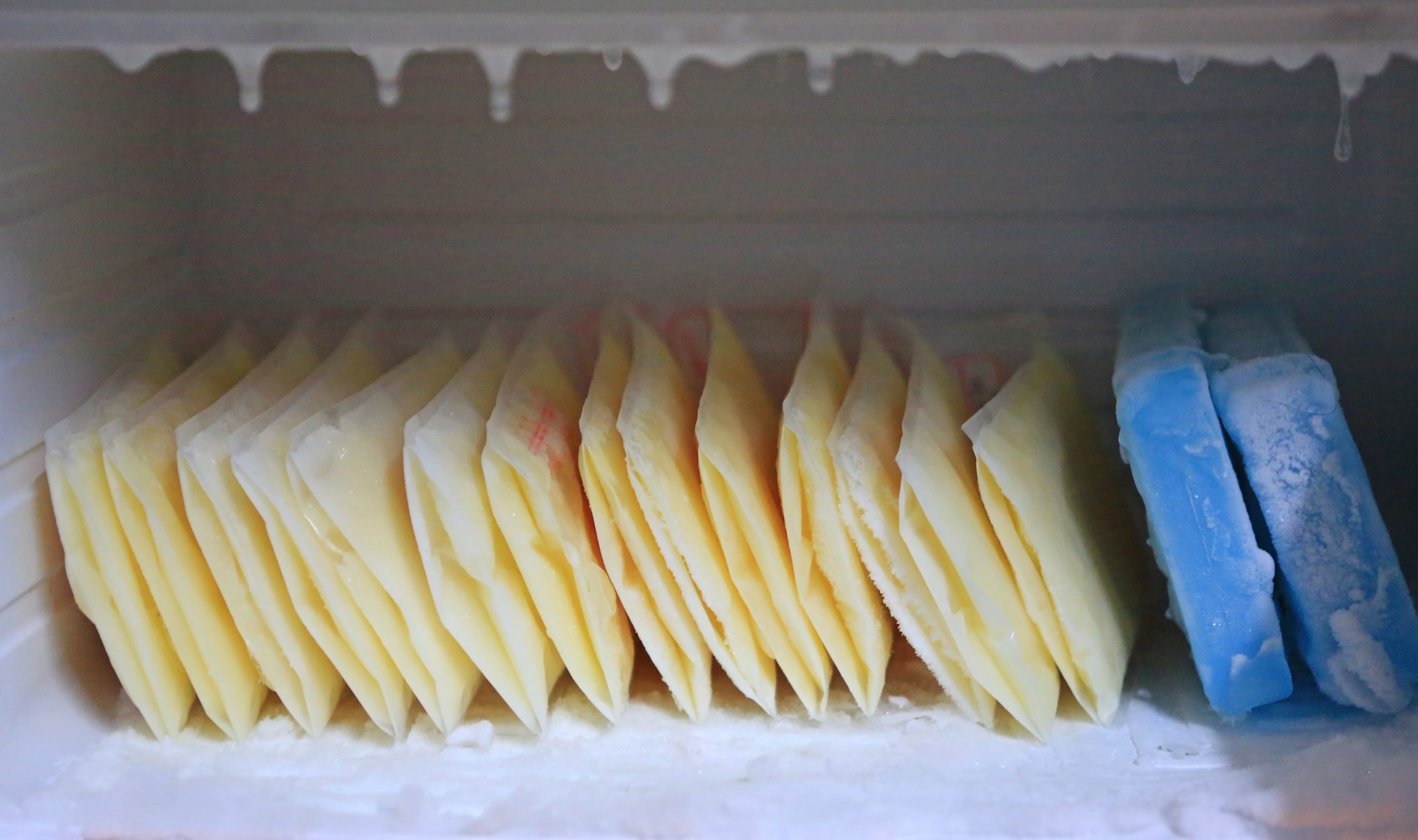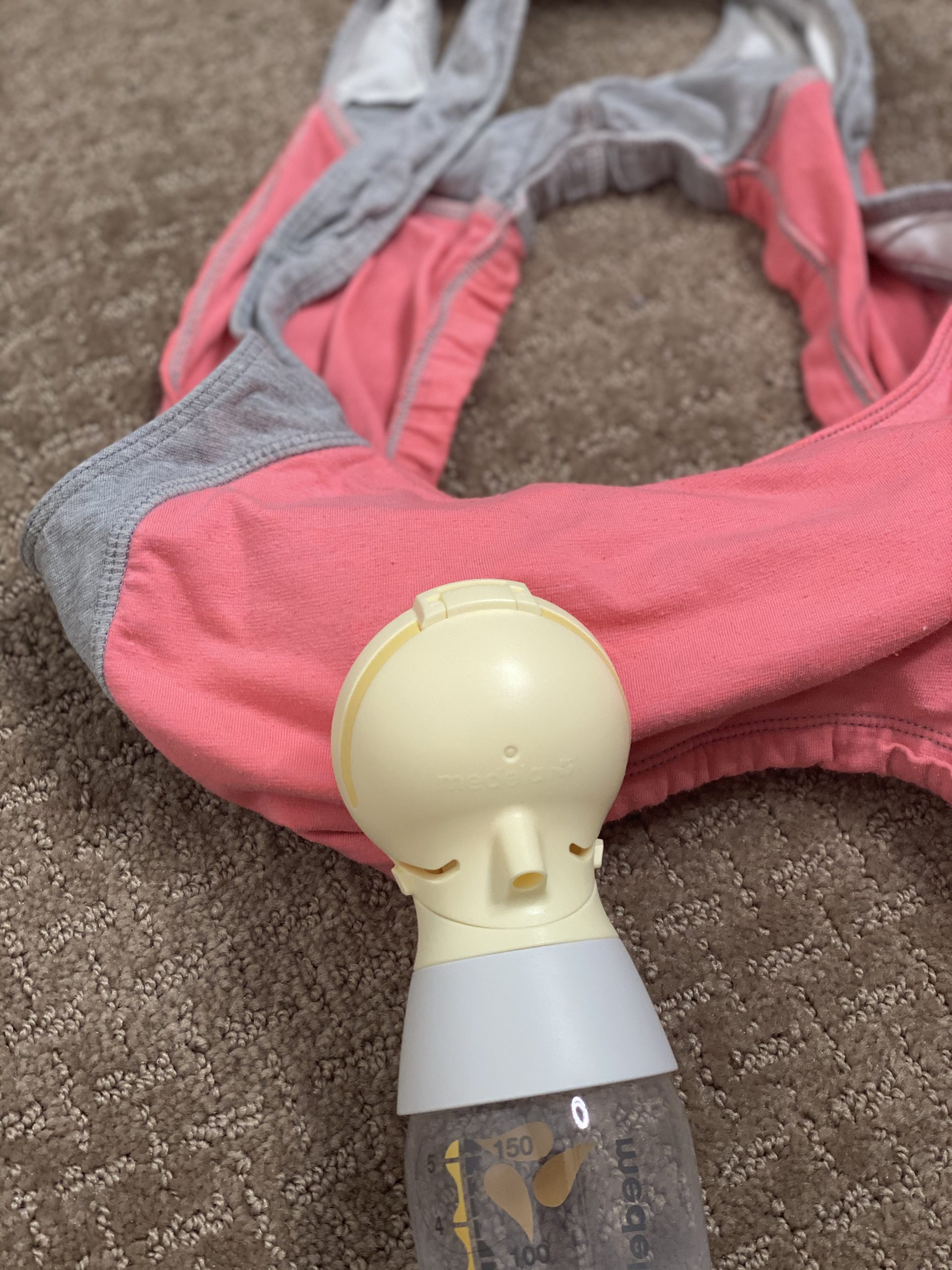Is your baby refusing your frozen breast milk? Does your breast milk taste soapy or sour after being defrosted – or even just after sitting for a while? You may be dealing with high lipase breast milk. Here’s what you should know and what you can do about.
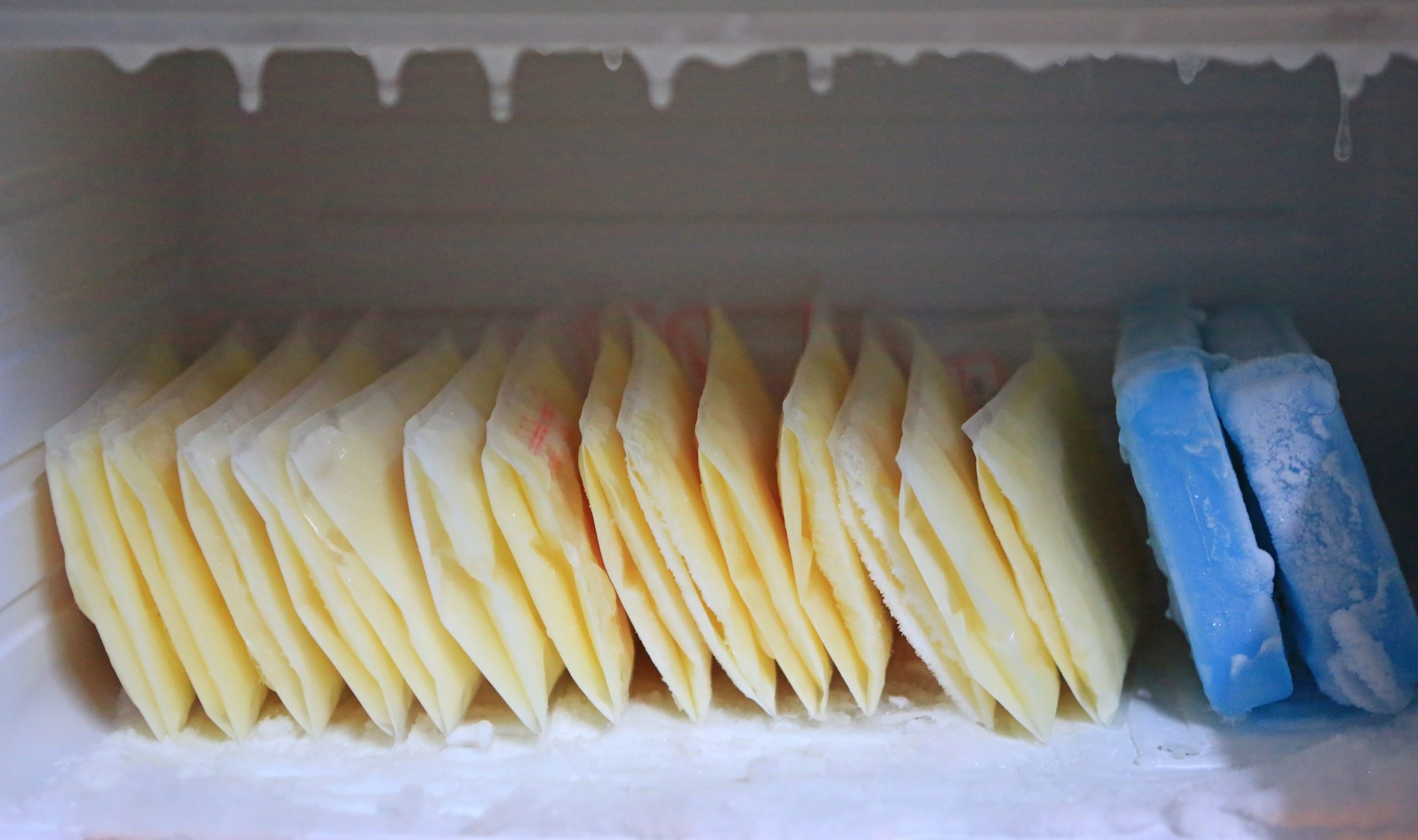
When it comes to breastfeeding, any type of hurdle can feel a bit impossible.
Thankfully, most of these hurdles CAN be resolved, even if it feels a little overwhelming at first.
When a mom comes to me and says, “Help! My baby won’t drink my defrosted breast milk, ” I first ask her to taste the milk.
Upon doing so, it’s common to discover that the milk doesn’t have the typical sweetness you’ll find with breast milk – but more of a soapy or even sour taste.
No wonder your baby doesn’t want to drink it! If this is the case for you, you are likely dealing with a case of high lipase.
Don’t worry; it’s not as scary as it sounds – but it’s important to know what it is and how you can fix it.
Have you never heard of high lipase? Trust me, you aren’t alone. Breastfeeding is often more complicated than just putting the breast in your baby’s mouth. I created Fuss-Free First Year so you don’t have to feel overwhelmed by these bumps in the road!
What is High Lipase?
Lipase is an enzyme that is found in breast milk. It is what breaks down the fats so that your baby can easily digest the milk.
High lipase occurs when extra enzymes break down the milk much faster than it should. It usually smells soapy and has a metallic taste.
The longer your breastmilk sits, the more prominent the smell and taste will become. Some high-lipase breast milk won’t start to taste this way until after it’s been frozen, while others can detect it within hours of pumping.
When Does High Lipase Affect Breastmilk?
If you are feeding your baby right from your breast you do not need to do anything differently because high lipase is not a factor until it sits after pumping.
Lipase is in all breastmilk although it is not activated right away. Once you pump a bottle it may take a few hours or even a few days for lipase to occur. Therefore if you have high lipase you want to treat the breastmilk before refrigerating or freezing.
How Does High Lipase Affect Breast Milk?
High lipase gives breastmilk a metallic taste the longer it sits. Having high lipase milk does not harm your baby, although most babies do not like the taste and will refuse to drink it. I find this to be the case especially with a baby who isn’t exposed early on to high lipase milk.
How do you test for high lipase in breast milk?
Because high lipase can impact milk at different points, it may take some time to figure out if your milk is impacted.
To test for lipase, express two ounces of milk and store it in the fridge. Then, do a sniff test at 2 hours, 4 hours, 6 hours, 12 hours, 18 hours, and 24 hours.
If you find your milk starting to smell off or taste metallic you know that it has higher levels of lipase in it. For some, it may take longer for the milk to start smelling or tasting off. You can also try and put your breast milk the freezer for a week and then defrost it and see what it smells or tastes like.
If this is the case, then you have two options:
Option 1: You need to feed your pumped breastmilk to your baby before it changes the smell and taste or
Option 2: The better option – is to treat your breastmilk for high lipase as soon as you can after pumping.
Treating your breastmilk for lipase is easy and it allows you to still store breastmilk that your baby will drink.
If you are planning to give refrigerated or frozen milk AT ALL, I would suggest testing it for high lipase before you freeze a ton of milk – there are few things more heart breaking for a breastfeeding mother than realizing she has a freezer full of milk her baby won’t drink.
How do you fix high lipase in breast milk?
There is no preventing high lipase in your milk, however, there are few things you can do if you do have high lipase in your breast milk.
Some babies are not affected by high lipase in milk where some babies will be more sensitive to the smell and taste. If your baby will
There are plenty of steps you can take to deactivate the lipase in your milk and allow your baby to still drink and be happy.
The most effective technique for treating high lipase milk is by scalding it.
Be aware that scalding it does effect some of the nutrients and immune fighting properties, however, as long as it’s not the only milk your baby gets, it is 100% fine to feed them scalded milk. Just make sure they are getting fresh milk throughout the day as well!
Click here to learn how to scald breast milk!
Navigate this issue and many others in Fuss-Free First Year – my private breastfeeding community that is the key to breastfeeding with confidence for longer.
What to Do With Affected Milk?
When a mother discovers her milk has high lipase and her baby won’t drink it, it’s only natural to want to see if you can salvage any of the milk.
Unfortunately, there isn’t A LOT you can do. Some mothers have success with putting a couple of drops of alcohol-free vanilla into the milk, but I wouldn’t do that before talking to your doctor.
Otherwise, you could use it to make breast milk soaps or lotions, or donate it to a mother in need who has a child proven to not be bothered by high lipase milk.
Discovering your milk has high lipase can be overwhelming and even devastating – however, by following the advice for scalding your milk, your baby should be able to drink it again soon!
<div class="grow-inline-subscribe-widget-603bc749-d992-4537-a8e1-1c28961d3e83"></div>Other Posts You May Enjoy:
- Is Your Breastfeeding Baby Biting? Here’s What You Should Do.
- 27 Common Breastfeeding Questions – and Answers!
- How to Wean from Breastfeeding: Everything You Need to Know
